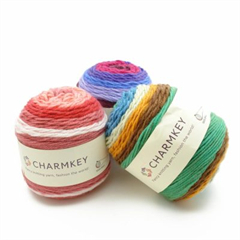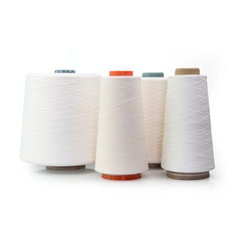Yarn fiber content natural vs synthetic
ChatGPT
Yarn fiber content is a crucial consideration when choosing materials for your knitting, crocheting, or other yarn-related crafts. Yarns can be made from natural fibers, synthetic fibers, or blends of both. Here’s a breakdown of the differences between natural and synthetic yarn fibers:
Natural Yarn Fibers:
- Cotton: Cotton yarn is derived from the cotton plant. It is known for its softness, breathability, and absorbency. Cotton is a popular choice for warm-weather garments and dishcloths.
- Wool: Wool yarn comes from the fleece of sheep and other animals like alpacas and goats (cashmere and mohair). Wool is prized for its warmth, elasticity, and moisture-wicking properties. It’s ideal for cozy sweaters, scarves, and socks.
- Alpaca: Alpaca yarn is made from the fibers of alpaca animals. It is exceptionally soft and luxurious, with excellent warmth and drape. Alpaca yarn is often used for elegant, lightweight garments.
- Silk: Silk yarn is derived from silkworms. It has a smooth, lustrous texture and is prized for its sheen and drape. Silk is often used for special occasion garments and accessories.
- Linen: Linen yarn is made from the flax plant. It is known for its durability and crisp texture. Linen is suitable for warm-weather garments and home textiles.
- Bamboo: Bamboo yarn is produced from bamboo grass. It is soft, breathable, and has a silky feel. Bamboo is often blended with other fibers to add drape and sheen.
Synthetic Yarn Fibers:
- Acrylic: Acrylic yarn is a synthetic fiber made from petroleum-based chemicals. It is affordable, durable, and easy to care for. Acrylic is available in various textures and is often used for blankets, afghans, and children’s items.
- Polyester: Polyester yarn is another synthetic option known for its durability and resistance to wrinkles and fading. It’s commonly used in combination with other fibers to add strength and stability.
- Nylon: Nylon is a strong and resilient synthetic fiber that is often blended with other fibers to increase durability and elasticity. It’s commonly used in sock yarns.
- Microfiber: Microfiber yarn is an ultra-fine synthetic fiber known for its softness and moisture-wicking properties. It’s commonly used for sportswear and activewear.
- Novelty Yarns: Some synthetic yarns are designed for specific decorative effects, such as eyelash yarn (creates a furry texture) or metallic yarn (adds shimmer and sparkle).
Key Considerations:
- Performance: Natural fibers often excel in terms of breathability, moisture-wicking, and warmth, while synthetics can be more durable and low-maintenance.
- Texture: Natural fibers tend to have a more organic, textured feel, while synthetics can be smoother and shinier.
- Cost: Acrylic and other synthetic yarns are generally more budget-friendly than luxury natural fibers like cashmere or silk.
- Sustainability: Natural fibers are biodegradable and renewable, making them a more environmentally friendly choice. However, some synthetic fibers can be recycled.
- Care Instructions: Natural fibers may require more delicate care, while many synthetics are machine-washable and easy to maintain.
The choice between natural and synthetic yarn fibers often depends on your project’s intended use, your personal preferences, and your budget. Experimenting with different yarns can help you discover the best materials for your specific crafting needs.
























